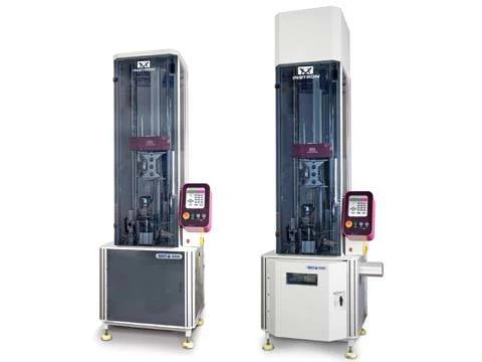High-speed impact testing on dashboards
In the automotive field, safety of passengers is key and drives research and development as well as quality control procedures. Every single critical component has to be tested. In the last years, car producers have looked for new and original features for car interiors design. Beside aesthetics, everything has to be in accordance with precise technical specifications; strength, durability and safety-related properties are the main properties to test.
Some of the most critical parts are dashboards and surrounding items, such as steering wheel, column switch and airbags. In the event of an accident, the dashboard area will absorb a significant amount of impact energy and, when needed, airbags will deploy. Dashboards are designed to minimize and absorb shocks and therefore are constructed with different specific parts of plastics: typically a foam padding and a cover made of PVC. During the airbag deployment, PVC covers break and passengers may be injured by the projected shreds. Better and better PVC covers are being developed addressing this issue. We were asked to test a number of specimens including complete dashboards and sample plates with different characteristics. We performed high-speed impact tests at different temperatures to understand the way PVC covers break.
For this test, we used a CEAST 9350 drop tower with optional High Energy system. The instrument was equipped with a 22 kN piezoeletric tup and a 20 mm hemispherical tup insert. DAS 64K data acquisition system and Visual Impact software were used to save and analyze data. Complete dashboards were secured to a custom support aligning the tup trajectory with the required impact point. Sample plates were tested on a standard support with pneumatic clamping. The thermostatic chamber of the drop tower was used to generate different testing conditions, in this case from room temperature down to -35°C. Available range is from +150 °C down to -70 °C. Impact velocity was set to 24 m/s (equal to 86 kph or 53 mph), with a data acquisition window of 20 milliseconds.
The software showed detailed impact curves, normally arranged as force vs deformation. We observed a brittle failure followed by limited energy absorption during crack propagation after peak. Peak force, speed, deceleration, deformation, absorbed energy are all quantities available for analysis. Visual inspection of the samples after impact was also carried out. The various samples showed a different extent of crack propagation and detachment of fragments. The effect of temperature was investigated since the behavior needs to be within specifications over the whole application range (from hot to cold weather). Low temperatures are the most critical and hence most commonly tested, since they tend to give a more brittle behavior.
CEAST 9300 Series
Impact resistance is one of the most important properties for component designers to consider, as well as the most difficult to quantify. Impact resistance is a critical measure of service life and more importantly these days, it involves the perplexing problem of product safety and liability. With the combined experience of Dynatup® and CEAST, Instron® has more than 80 years experience in designing impact testing systems to simulate real-life impact conditions.
- Produtos
- 04/19/2011
- 1.72 MB



